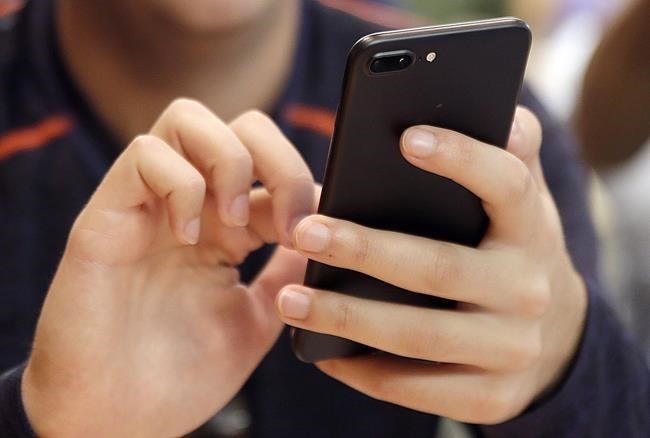TORONTO — A new study suggests there's been an uptick in phone scams in Canada, such as those involving federal agency impersonation or air duct cleaning.
A report released Tuesday by Seattle-based Hiya, which aims to protect phone users from spam through its voice security platform, found 6.3 per cent of unwanted calls received by Canadians in the first three months of the year were considered fraud, compared with 5.9 per cent in the final quarter of 2022.
Unwanted calls include those that are legal, such as sales calls concerning a service the recipient has subscribed to, as well as two illegal types: scams involving an outright lie, and those where a product does exist, but the recipient didn't request it.
Canada lags behind the United States, the study found: the average Canadian received three spam calls per month in the early part of the year, compared with 14.5 in the United States.
But Canadians were on the other end of a much higher proportion of fraud-related calls. Spam calls made up 18.3 per cent of calls from unrecognized numbers in Canada, the report found, with 6.3 per cent of them considered fraud.In the U.S., one-quarter of calls from non-contacts in the first quarter were spam, but fraud calls accounted for just 0.7 per cent of them.
"It seems like for those who are trying to hit the Canadian market, they're doing so more aggressively," said Jonathan Nelson, director of product management for Hiya.
"You're getting a lot less of the high-volume businesses that are trying to operate within the laws, within the CRTC guidelines, and you're getting a lot more of those who are just ignoring the laws completely."
Like other countries studied, some of the top scams in Canada were related to cryptocurrency trading and those targeting newer immigrants who may be less familiar with the way the government works. The latter included callers impersonating government officials claiming to be from theCanada Border Services Agency or Canada Revenue Agency.
On its website, the CRA reminds Canadians to be cautious when receiving calls that request personal information such as a social insurance number, credit card number, bank account number or passport number. While the CRA may call using an automated telephone message during tax season, it said it would never ask recipients to give any personal information.
Canadians also received high volumes of air duct cleaning scam calls, which the report noted were nothing new, but are largely unheard of outside of the country.
"That's not even a concept we see in other markets," said Nelson.
"At some point, someone tried this campaign … and they must have had enough success that it just exploded. They just kept going and other spammers started copying them and it's just sort of stuck."
In 2022, the Canadian Anti-Fraud Centre received 90,377 fraud reports totalling more than $530 million in losses, according to data published in February. It estimated that just five to 10 per cent of victims file a fraud report with the CAFC.
It said identity fraud, phishing and extortion were the leading types of fraud reported.
The CAFC said on its website as of March 31, it had received 18,645 reports of fraud totalling $133.7 million in losses this year.
Combating scams has been a priority for Canada's telecommunications regulator in recent years.
Last November, the CRTC hosted a meeting with its counterparts from Australia, Ireland, Hong Kong and the U.S. to explore collaboration to disrupt scam communications.
A year earlier, the federal regulator mandated that telecom companies implement technology to validate a caller's identity. One component of that called Secure Telephony Information Revisited, or STIR, acts as a technical standard that provides a means for carriers to authenticate the identity of callers.
The other component, known as Shaken, short for "signature-based handling of asserted information using tokens," created the framework for implementing the standard in IP-based service providers' networks.
The CRTC did not respond to a request for comment.
Rogers Communications Inc. and Telus Communications Inc. have each rolled out additional tools to help filter out spam calls, while Bell Canada got the green light from the CRTC in 2021 to block all fraudulent calls transmitted over its network entirely.
"You are going to see a downturn with that, hopefully a lasting one," said Nelson.
"It all just goes back to the dollar signs. These campaigns do cost them money to run. They're looking at their success rates for these calls. If it declines, they'll either try different calls or try different markets."
Nelson said Hiya recommends having some level of spam protection on your phone so that when the phone rings, recipients have something more than a 10-digit number to go on to decide, "should I be wary."
"You just need to slip up once and it can really cost you," said Nelson. "Even if you think I could spot a scam from a mile away, they can be really clever, so always just be really cautious if you don't know who you're talking to."
This report by The Canadian Press was first published May 2, 2023.
Companies in this story: (TSX:RCI.B, TSX:BCE, TSX:T)
Sammy Hudes, The Canadian Press


